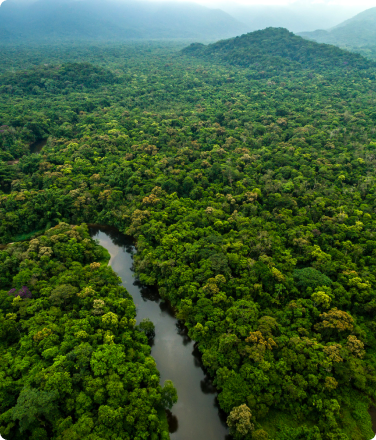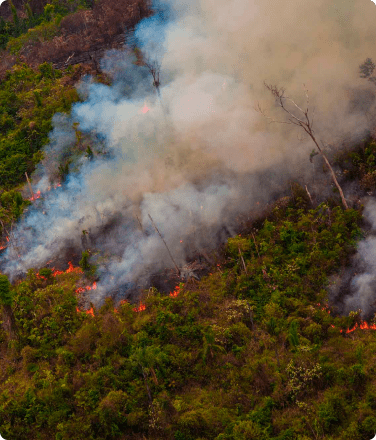No one is better equipped to protect the world’s rainforests than the Indigenous peoples who have lived in and cared for them for generations. These communities are not only guardians of the forest—they are the foundation of its continued survival. Last month in Brazzaville, Republic of Congo, Indigenous peoples and local communities gathered to send a powerful message to the world: the future of Earth’s forests, and the survival of all life they sustain, hinge on Indigenous peoples and communities having the tools, resources, and recognition they need to confront the mounting threats pushing deeper into their territories every day.
The Global Alliance of Territorial Communities (GATC)—a long-standing partner of Rainforest Foundation US (RFUS)—is a political platform of Indigenous peoples and local communities representing over 35 million people across 24 countries in Asia, Africa, and Latin America. Together, these communities defend over 2 billion acres of forest, an area nearly the size of the United States.
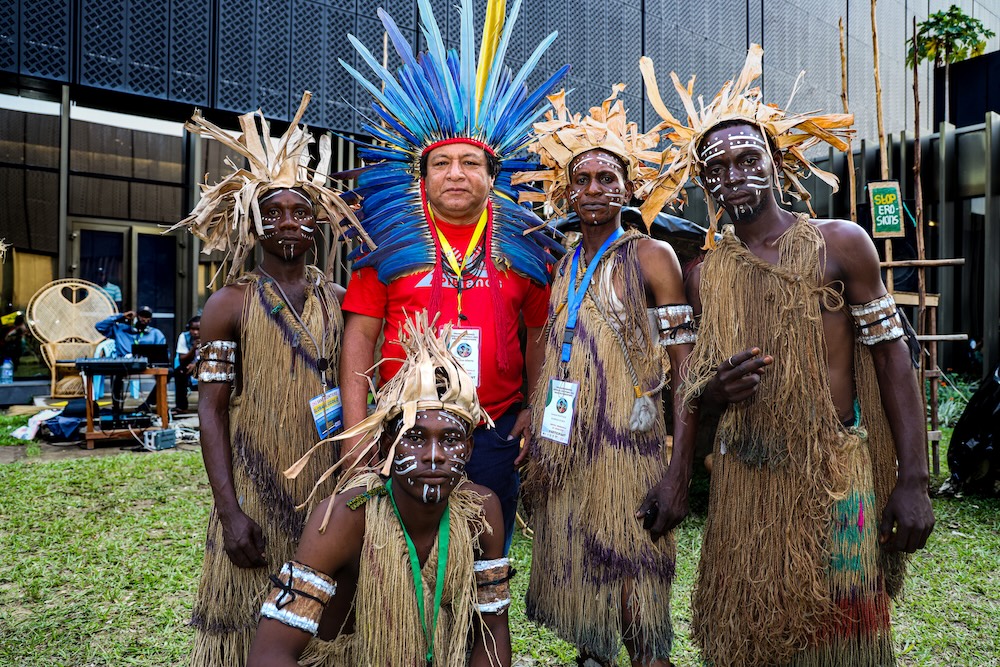
The GATC and the Rights and Resources Initiative (RRI) convened the Global Forest Basins Congress in Brazzaville, bringing together guardians from the world’s most critical tropical forest regions: the Amazon, Congo, Borneo-Mekong-Southeast Asia, Central America, and Mexico. The Congress marked a pivotal moment for Indigenous peoples and local communities to strengthen their alliances and assert their collective leadership in shaping the future of our planet. Indigenous leadership must not only be recognized, but centered in climate governance, environmental policymaking, and funding decisions—especially in the lead-up to the 30th United Nations Climate Change Conference of the Parties (COP30), a defining summit set to take place later this year in the Amazon rainforest in Belém, Brazil.
Focus on Land Rights, Visibility, and Direct Funding
At the Global Forest Basins Congress, Indigenous peoples and local communities called for greater visibility, stronger land rights, and direct access to climate finance. They urged an end to extractive models that decimate ecosystems and harm communities, demanding instead a future where humanity lives with nature, not in opposition to it. Their message was clear: “The answer is us—all of us.”
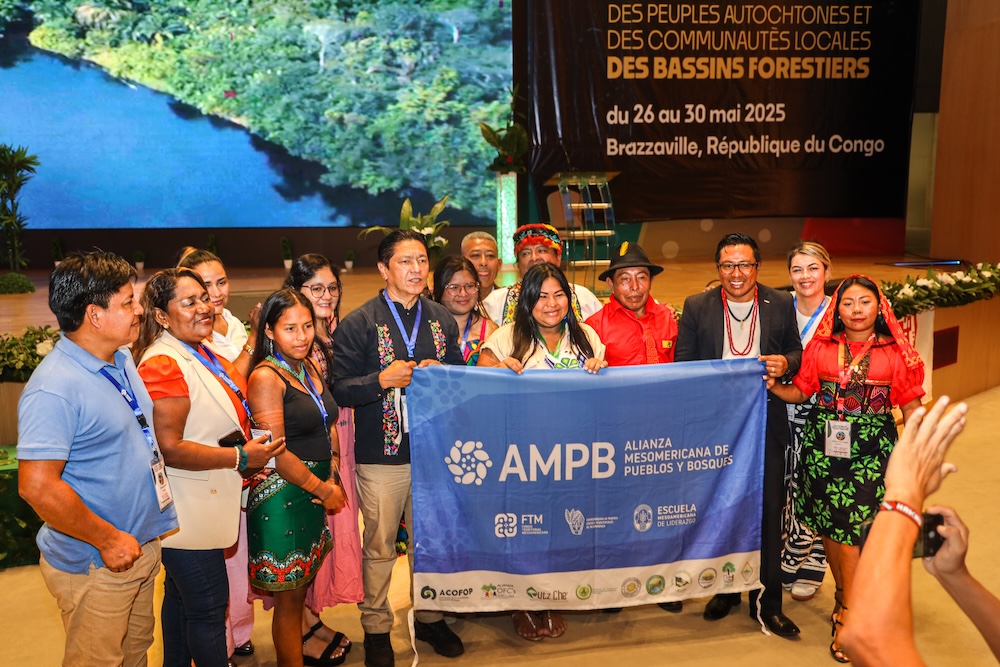
Their demands included the recognition and protection of their land rights—not only as a matter of justice, but as essential to addressing the interconnected global climate and biodiversity crises. Indigenous lands are known to be some of the Amazon rainforest’s strongest carbon sinks,1 and extensive research shows that Indigenous peoples are the most effective defenders of these forests. Their territories consistently experience lower deforestation rates—66% less in formally titled lands compared to untitled ones. When equipped with tools for community-based forest monitoring, Indigenous communities have been shown to reduce forest loss by more than 50% in just a single year.
They also called for an end to violence against land defenders, full participation in all decisions impacting their territories, and increased respect for their right to Free, Prior, and Informed Consent (FPIC) for any project or activity that could affect their lands and livelihoods. They additionally emphasized the importance of honoring Indigenous knowledge systems, which are vital for climate resilience and adaptation—especially as intensifying droughts and devastating fires continue to sweep through the Amazon rainforest.
Political leaders are finally beginning to recognize that our knowledge is scientifically grounded, and that what we have been saying for decades is true: Climate change cannot be addressed as a single issue, but rather as an interconnected set of elements. This gathering is a crucial step toward making our actions visible, sharing real lessons from our territories, and building alliances that prioritize life, water, and the planet’s balance.
– Levi Sucre Romero, an Indigenous Bribri leader from Costa Rica and Director of the Mesoamerican Alliance of Peoples and Forests (AMPB)
To enable large-scale change, participants underscored the need for direct, flexible access to climate and biodiversity funding. The Congress called for an ambitious new global finance pledge at COP30 that delivers resources directly to Indigenous peoples and communities—ensuring they have the support necessary to lead, to thrive, and to continue protecting their forests for generations to come. This funding is critically overdue—despite being the planet’s most effective forest protectors, Indigenous peoples and local communities have received less than 1% of global climate mitigation and adaptation finance over the past decade.2
The Path to COP30
The Congress in Brazzaville was a defining moment. We’re watching the world’s rainforests get destroyed at a rate we’ve never seen before, but Indigenous and local communities are showing us exactly what we need to do. They’re speaking with one voice here—they want real partnerships with governments, donors, and big international organizations. With minimal climate finance reaching the communities safeguarding our planet’s last rainforests, the gap between promises and action is stark. We must do better. At COP30, Indigenous leadership must be matched with bold, direct financial commitments.
– Kim Chaix, Director of External Relations & Partnerships, Rainforest Foundation US
Despite key commitments to Indigenous peoples and local communities at past COPs, progress on direct funding remains slow. As the world waits, rainforests—and the communities protecting them—continue to bear the brunt. In 2024, the tropics lost more than 16 million acres of primary rainforest—the highest loss in over two decades.3 Much of this destruction was driven by human-set fires, often ignited to clear land for expanding agriculture.
In Brazil, the host nation of COP30, environmental threats are rapidly intensifying. From legislative efforts to dismantle environmental protections, to imminent oil drilling at the mouth of the Amazon River, and plans to pave a highway through one of its healthiest forest regions, pressure on ecosystems and Indigenous peoples’ territories is mounting. These actions, alongside intensifying attacks on Indigenous peoples’ rights, underscore an urgent need for meaningful global accountability and action.
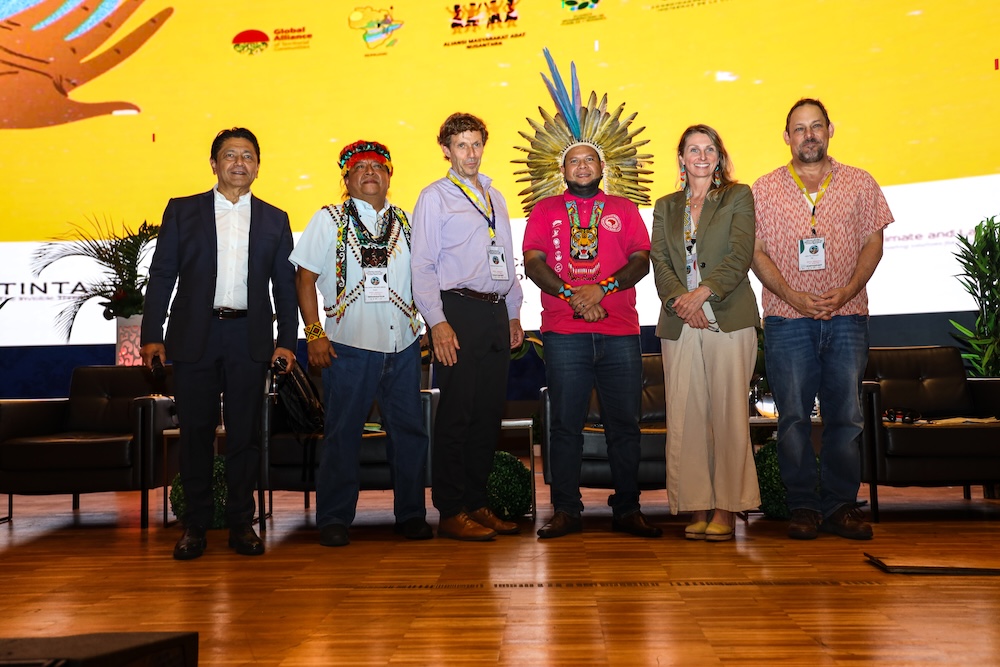
COP30 marks ten years since the signing of the Paris Agreement. If Indigenous peoples’ demands are met, it would be a major milestone in safeguarding the world’s rainforests and advancing climate justice. At this pivotal moment, RFUS is working alongside Indigenous partners across Central and South America to elevate their priorities and ensure their initiatives and demands are prominently represented in the lead-up to and at this critical event. Together, we are advocating for a new global funding pledge for Indigenous peoples and local communities and an intergovernmental commitment to recognize Indigenous land rights through the Forest and Climate Leaders’ Partnership (FCLP). These efforts aim to secure bold policy and financial commitments that reinforce land tenure, support climate adaptation, and uplift the leadership of forest guardians on the frontlines of protecting the planet’s last remaining rainforests.
The GATC is engaging with the Tropical Forest Forever Facility (TFFF), an innovative new financing mechanism that provides payment to tropical forest countries for keeping their forests standing. The GATC is supporting the design of a specific allocation mechanism for Indigenous peoples and local communities to ensure they receive funding for their role in protecting forests. TFFF aims to mobilize $125 billion to reward forest protection, with at least 20% of funds going directly to Indigenous peoples and local communities. If fully implemented, it could deliver long-overdue financing to those who have protected forests for generations.
A Future Rooted in Indigenous Leadership
We all breathe one air, we all drink one water, we all live on one Earth. We must all protect it.
– Chief Raoni, Indigenous Kayapo leader, Brazil
From the Amazon to the Congo to Southeast Asia, Indigenous peoples and local communities are paving a shared path forward to protect the most powerful climate stabilizers we have: intact tropical forests. This path is rooted in ancestral wisdom, grounded in science, and proven by centuries of stewardship. Their demands for land rights, meaningful climate finance, and recognition as rights-holders are not only just, they are essential. Decision makers at COP30 must match the courage and clarity of these leaders. Because when Indigenous peoples and local communities thrive, the forests thrive—and when the forests thrive, life on Earth has a chance to endure.
Sources:
- World Resources Institute, Indigenous Forests Are Some of the Amazon’s Last Carbon Sinks, January 6, 2023 ↩︎
- Rainforest Foundation Norway, Falling Short, 2021 ↩︎
- World Resources Institute, Fires Drove Record-breaking Tropical Forest Loss in 2024, May 21, 2025
↩︎


